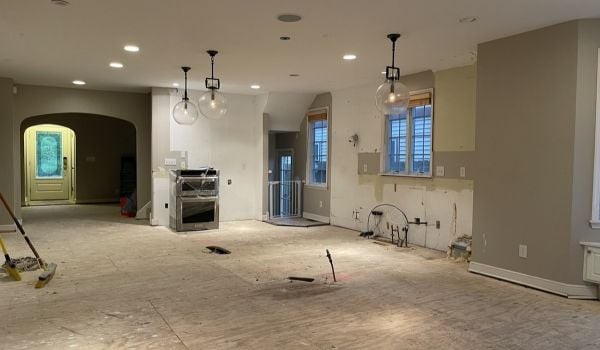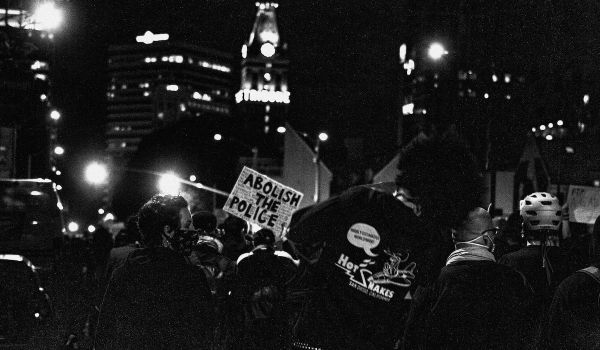Open Cities: New Media’s Role in Shaping Urban Policy was a two-day conference, produced by Next American City and funded by the Rockefeller Foundation, that united new media and urban policy’s top thinkers and practitioners. Through a series of panel discussions, presentations and networking opportunities, this conference will discuss new media’s strategies for dealing with a variety of challenges — such as how to build an engaged urban citizenry, best utilize municipal data and develop cost-saving technologies or networks to improve cities. For more about the conference, click here.
Please scroll down to see a slideshow.
On Tuesday, Adolfo Carrion Jr., director of the White House Office of Urban Affairs Policy, gave a keynote speech. He opened by talking about the nation’s being in a “very very difficult time,” but mentioned that his office is optimistic that they’ll find room in the 2011 budget for new urban programs. We need to figure out a way, he said, “to create the right kind of platform, not just a website,” that allows the administration to engage with people. “The furthest I get into this universe that you’re in,” he told the audience, “is Googling stuff. The President knows way more than I do.” During a panel entitled “The Potential of Cities,” Damon Rich of the City of Newark and Center for Urban Pedagogy, Assaf Biderman of SENSEable City MIT, Robin Chase of Meadow Networks and John Tolva of IBM addressed the question: How will open systems, geolocation, hyper local data and other technological innovations change the ways people exist in and perceive their cities? To answer this question, the panelists talked about using open data and open-source technologies to create a “dynamic relationship between us and the infrastructure” and to “place technology in the context of the built environment.” Other topics discussed included getting tech professionals and policymakers to cooperate, and maintaining personal privacy in an era of open data.
In a keynote speech, Janette Sadik-Khan, head of the New York City Department of Transportation, highlighted the many strides New York has made in recent months to improve its transit networks, like an app for door-to-door information for cyclists, the creation of Broadway Boulevard and other “linear public spaces, and increased bike racks and mixed-use streets. Then, in a panel called “Informing the Public,” Bill Buzenberg of the Center for Public Integrity, Sewell Chan of the The New York Times, Aaron Naparstek of Streetsblog, Rhys Thom of EMBARQ and Brian Boyle of Issue Media Group discussed how their different media models — ranging from conventional newspapers to urban advocacy blogs — serve the public. During the dynamic conversation, panelists debated the roles of journalists an advocates, warned against underrepresenting the “less wired” and strategized ways to use the web to highlight best practices and leverage collective intelligence. Finally, in a panel called “Technology for Participatory Planning and Civic Engagement,” Rob Lane of the Regional Plan Association, Deb Ryan of Ryan-Harris, John Geraci of DIY City, Eric Gordon of Hub2 and Nick Grossman of The Open Planning Project discussed how new software and wikis are changing the way that citizens can engage with the design of their communities. The group discussed the distinction between advocates and planners, the ways in which cities “self-organize,” how to actually implement the input of online “planners” and advocates, and whether the town hall planning meeting is becoming a thing of the past.
The second day opened with a speech by Shelley Poticha, Senior Advisor for Sustainable Housing and Communities, HUD, who discussed how layering the efforts of different departments to collectively approach a problem is a priority for her new office. Then, in a panel called “Moving Cities,” Christian Peralta Madera, Princeton University, Mike Mathieu, Front Seat, David Alpert of Greater Greater Washington and Joe Hughes, Google Transit discussed how websites such as Walk Score and Google Transit, as well as transit advocacy blogs, can alter the way that citizens perceive their mobility within a city. Later, in a talk called, “Information, Communication and Governance,” Public Stuff’s Lily Liu, Chris Vein of the City of San Francisco, Bill Schrier of the City of Seattle, Peter Corbett of iStrategyLabs and Daniel Munz of The Collaboration Project discussed how the government is using the Internet and data collection to reach its constituency. The panelists talked about open data applications, e-government and other methods that cities use to engage their citizens.
The next panel, “Daily Urbanism,” brought together Morgan Clendaniel of GOOD Magazine, Wendy Gordon of Smarter Cities; Dan O’Neill of EveryBlock and Ben Berkowitz of SeeClickFix. Together, they talked about how data visualization can help bridge the gap between government projects and citizen engagement, and identified opportunities to use data to better understand cities and guide regional policies.
In a lunchtime keynote, Bruce Katz of the Brookings Institution talked about how the country’s economics are tied into metropolitan areas and thus, how the future of our country really lies in the success of our cities. Finally, all attendees came together to work on a charrette and case study for Washington, D.C. Attendees worked with Harriet Tregoning of the D.C. planning department and D.C. Chief Technology Officer Chris Willey to identify feasible these new media projects in the D.C. area. The case study explored opportunities and obstacles for D.C. and invited comparisons to other cities.

_600_350_80_s_c1.jpg)













